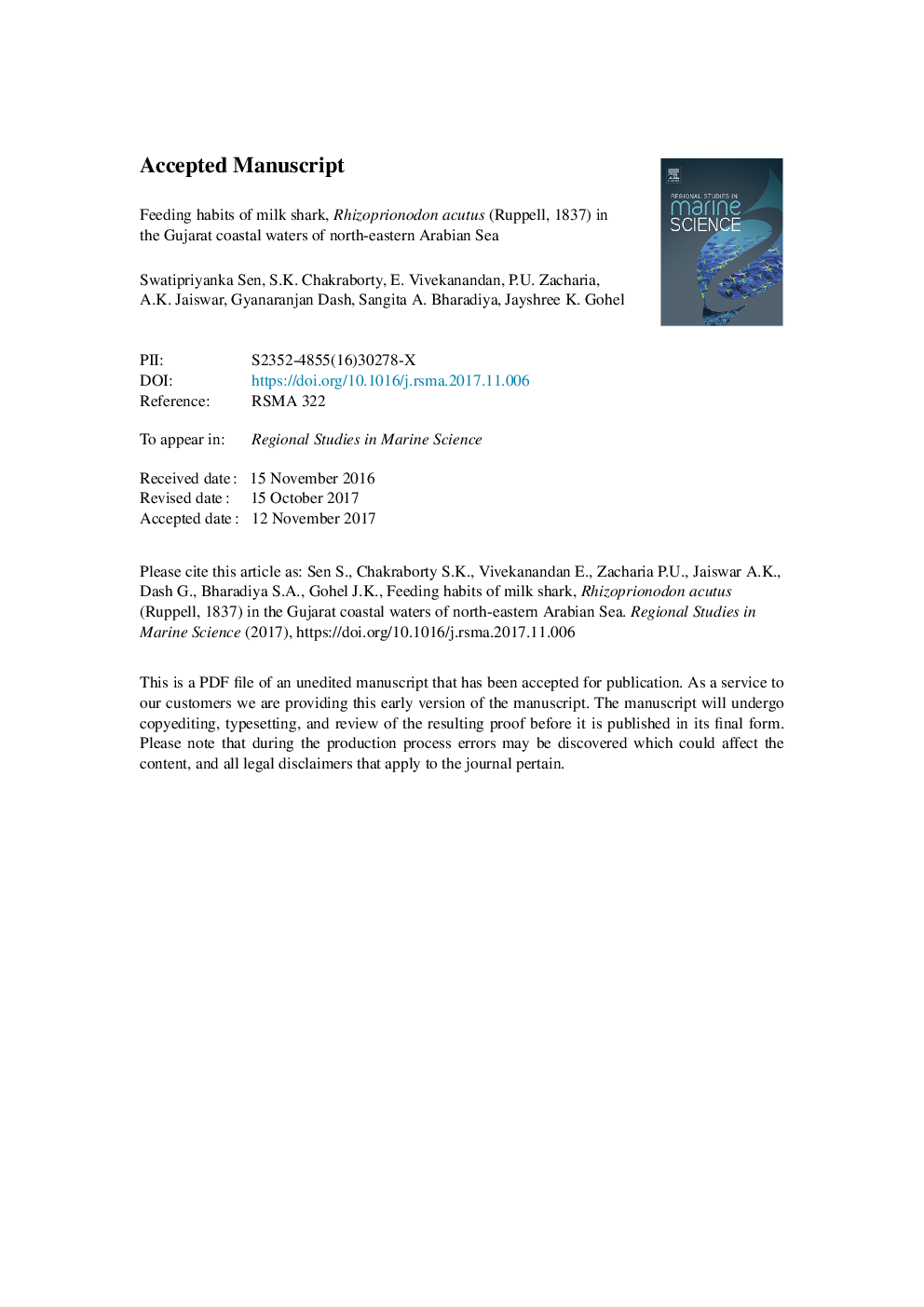| Article ID | Journal | Published Year | Pages | File Type |
|---|---|---|---|---|
| 8872654 | Regional Studies in Marine Science | 2018 | 30 Pages |
Abstract
The feeding habit of milk shark Rhizoprionodon acutus was investigated in 684 specimens collected along Gujarat coast (India) of north-eastern Arabian Sea from January 2013 to December 2014. The length range of females was 32-89.6 cm and males 33.5-89 cm. The shark foraged on diversified prey items which were pooled into four distinct groups i.e., teleosts, crustaceans, mollusks and annelids. Teleosts (Dietary coefficient, %QI=83.05 and index of relative importance, %IRI=78.40) were found to be the preferred food items followed by crustaceans (%QI=16.21; %IRI=19.78), which formed the secondary food item group. Mollusks (%QI=0.74; %IRI=1.69) and annelids (%QI=0.01; %IRI=0.14) constituted the accidental or accessory food items. The species, though is a pelagic predator, probably performs vertical movements in search of prey items. The shark also showed some sorts of preference and selectivity for clupeids, engraulids and carangids. Females though showed significantly lower index of relative fullness (IRF) (Pâ¤0.5) and comparatively lower vacuity index and lower mean number of preys per stomach compared to the males, the preference for prey items was not found to be significantly different between the females and males. Juveniles were found to have significantly higher IRF (Pâ¤0.5) and comparatively higher vacuity index than that of the adults, whereas the mean preys per stomach was found to be lower than that of the adults. Moreover, the prey preference was also significantly different between the juveniles and adults. The study provides necessary baseline information about the feeding habits of the shark in the region which will be helpful in understanding the trophodynamics of the species under the influence of overfishing and climate change.
Related Topics
Physical Sciences and Engineering
Earth and Planetary Sciences
Oceanography
Authors
Swatipriyanka Sen, S.K. Chakraborty, E. Vivekanandan, P.U. Zacharia, A.K. Jaiswar, Gyanaranjan Dash, Sangita A. Bharadiya, Jayshree K. Gohel,
